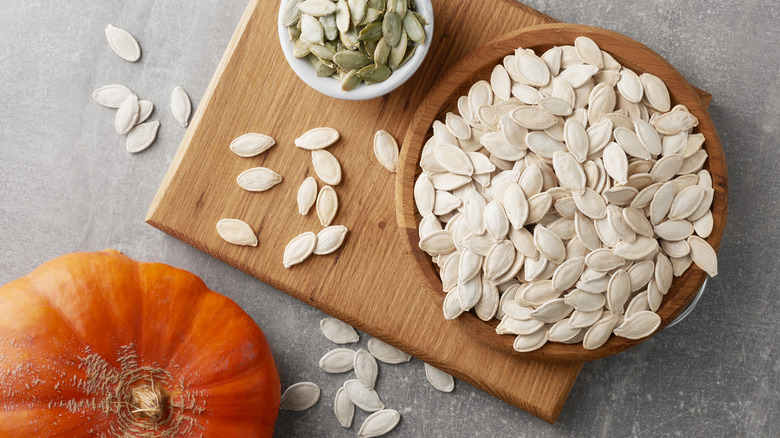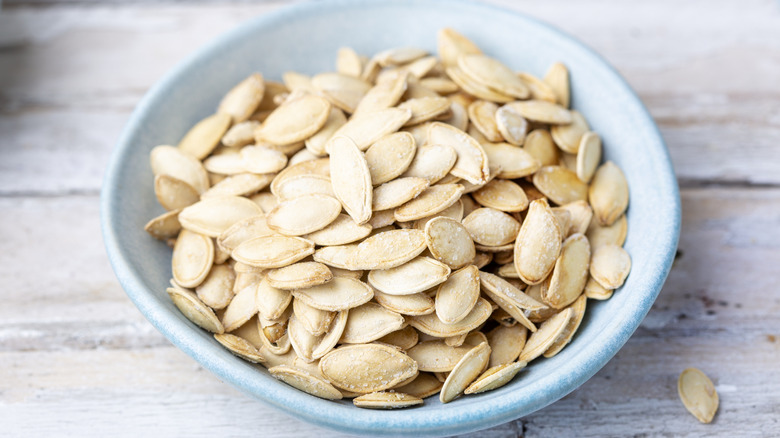Here's When You Should Plant Those Leftover Pumpkin Seeds
They might be most closely associated with Halloween, but pumpkins are an underrated all-around culinary powerhouse. They perfectly capture the flavors of fall, being most in season from September to December, and with canned pumpkin, you can enjoy them all year round — whether that's in a pumpkin spice espresso martini or a fall-inspired banana bread. It doesn't matter if you're carving a spooky jack-o'-lantern, making a cozy, hearty soup, or baking a Thanksgiving pumpkin pie — preparing pumpkin gets messy. Anyone who's scooped one out knows the chaos of stringy pulp and seeds, with a standard pumpkin containing hundreds of them. But instead of tossing those seeds, there's a better use for them. To find out more, Food Republic consulted Angelika Zaber, lawn care specialist and gardening expert, who explained how pumpkin seeds can actually be planted.
"The best time to sow pumpkin seeds depends on whether you want to start them indoors first or wait a little bit longer and plant them directly outside," Zaber told us. "Indoor sowing can be done as early as mid-April. For outdoor sowing, it is better to wait until late May or early June." Pumpkin seeds thrive in warmth, and their seeds need warm soil to germinate and grow, with cold soil causing them to rot. When you sow seeds indoors, they get a head start in a warmer, controlled environment, while outdoor planting should wait until after the frost, when the soil and air are reliably warmer. A great approach is to begin growing your seedlings indoors, then transfer them outside once the weather conditions are more amiable.
How to care for and store pumpkin seeds
Pumpkin seeds have plenty of interesting facts, and before planting them, they need some special prep. According to Angelika Zaber, leftover seeds "need to be cleaned thoroughly, to make sure that there is no pulp left, and then dried thoroughly on a paper towel for three weeks." Freshly harvested pumpkin seeds are coated in pulps and sugars from the flesh, and if you don't wash that off, it can attract a wide variety of pests while the seeds are drying, alongside being a hotbed for bacterial growth. You should also make sure you pick healthy-looking seeds, avoiding seeds that look small or flat. To pick out the best ones, you could use the float test – which is not 100% accurate – but if the seeds sink, some gardeners interpret it as a sign that they'll germinate well.
Since pumpkin growing season is in the fall, but the best time to plant the seeds is mid-spring, chances are that you'll need to store them for several months. "The easiest way to store pumpkin seeds is in an envelope stored in the fridge," Zaber advised. "Some people like to store them in plastic bags, but paper is breathable, which will prevent mold from forming." The key factors to remember are simple: cool, dry, and dark. With these conditions, your pumpkin seeds will stay viable and thrive when planting season arrives. The fridge is dark and cool, so it's perfect to keep the seeds dormant, but it can be wet or humid. One smart tip is to add a silica gel packet to your envelope, which will absorb excess moisture to keep your seeds extra dry.


